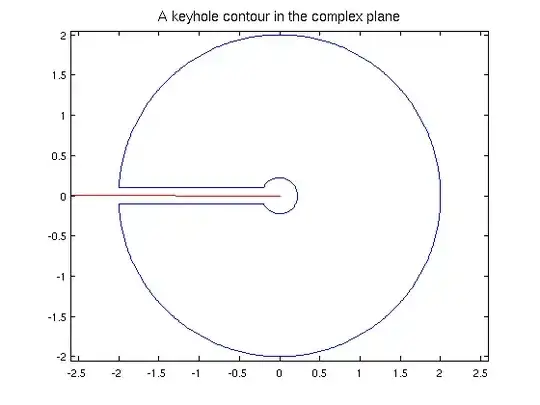Assume that the only singularities of a function h(z) are finitely many poles that lie away from the origin and the negative real axis. Show that integration of the function f(z) = h(z)ln z, with − π < arg(z) ≤ π, around an appropriate keyhole contour, leads to being able to find the value of the integral of h(-x)dx between 0 and infinity.
I have some idea with how to go about this question, by sketching an appropriate keyhole contour and considering each case separately, but I am unsure on how to start and what to consider for the contour. Thanks.
